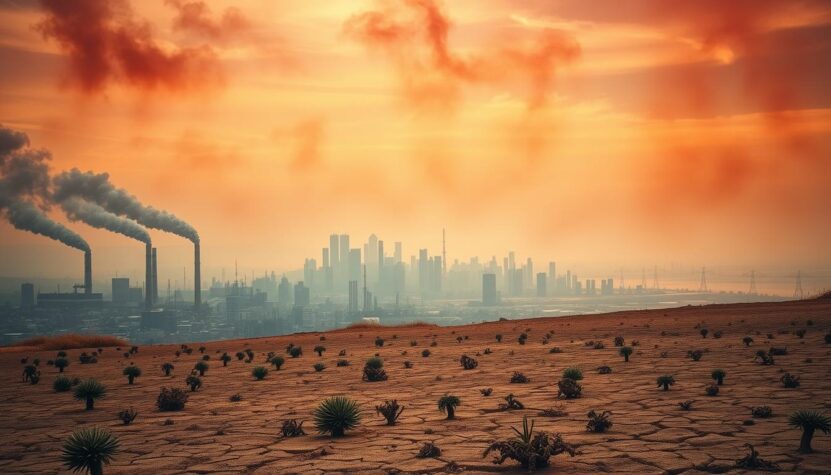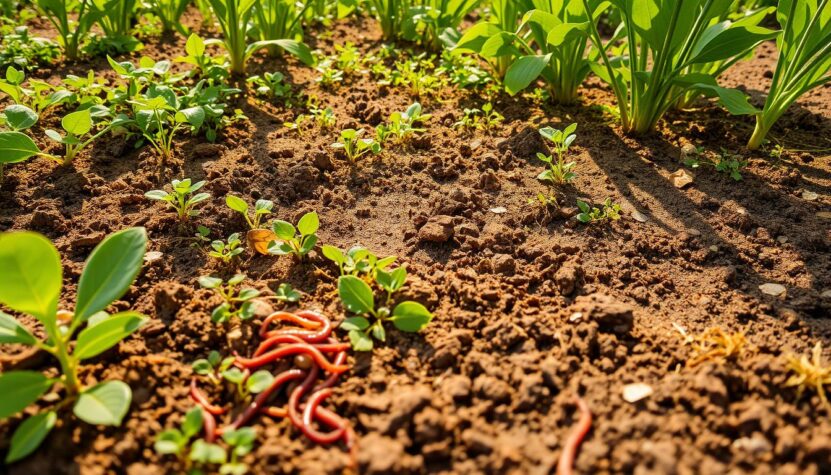Ecosystem sustainability stands at the forefront of environmental conversations, highlighting the intricate balance between human actions and the well-being of our planet. You may not realize that everyday activities—ranging from the fuel you use for transportation to the food you consume—are significantly reshaping the ecosystems that sustain us. The consequences of these actions extend far beyond our immediate surroundings, influencing biodiversity, climate patterns, and air quality. Deforestation, fossil fuel consumption, industrial activities, and unsustainable agricultural practices serve as poignant examples of how human impact on ecosystems has spiraled into a global crisis. With the Earth’s ecological footprint soaring to 1.7 times its biocapacity, we face an urgent challenge: to transform our behaviors towards environmental sustainability while fostering resilience within nature. This introductory section explores the ways your lifestyle and choices contribute to ecosystem degradation, emphasizing the importance of awareness and action.
Understanding the urgent need for ecosystem sustainability is crucial. As you read through this article, you’ll discover essential information about how various human activities contribute to environmental degradation, and why it is essential to rethink our practices to mitigate these impacts. By addressing the complex relationship between our daily habits and the health of the planet, you can learn how to make a difference and contribute to restoring balance in ecosystems worldwide.
Introduction to Ecosystem Sustainability
Understanding ecosystem sustainability means recognizing how ecosystems function and their vital contributions to human life. Approximately 3% of the Earth’s habitats remain undisturbed, highlighting the urgent need for the sustainability of ecosystems. These ecosystems provide essential services such as clean air and water, food security, and biodiversity support. Rainforests, for example, are home to over 30 million species of plants and animals while acting as significant oxygen sources. Wetland ecosystems sustain various animal species and possess natural filtration systems that contribute to maintaining ecosystem health.
The interplay between human activities and ecosystems can disrupt their essential functions, leading to consequences affecting both natural and human systems. Deforestation, overconsumption of resources, and pollution cause ecosystems to become unsustainable. These threats push the biosphere integrity beyond critical thresholds, resulting in accelerated extinction rates and damaging the delicate balance of life. Coral reefs serve as examples of vital ecosystems that protect coastlines and provide shelter and nourishment for countless marine species.
To ensure the sustainability of ecosystems, they must possess characteristics that allow them to thrive without external influence or resources. Many species in deserts have adapted to extreme conditions, showcasing nature’s resilience. The importance of maintaining ecosystem health cannot be overstated, as the deterioration of these systems threatens not only wildlife but also the very resources that are essential to human survival.
How Human Impact on Ecosystems is Measured
Understanding the human effects on environmental balance is crucial for assessing the state of our ecosystems. Various measurements exist to gauge this impact, with the ecological footprint being one of the most significant. This metric evaluates humanity’s demand on natural resources against the Earth’s capacity to regenerate. Presently, humanity’s ecological footprint exceeds the Earth’s biocapacity by 1.7 times, highlighting unsustainable consumption patterns that strain our planet.
In addition to the ecological footprint, the biodiversity footprint provides an essential view of the consequences of human actions. It tracks the loss of species and destruction of habitats. Alarmingly, approximately one million species face the threat of extinction due to human activities such as deforestation and pollution. According to a United Nations report, around three-quarters of land-based environments and two-thirds of marine ecosystems have been detrimentally altered by human actions.
Statistics further illustrate the extent of human impact. Less than three percent of Earth’s total land remains ecologically intact, with 55 percent of lakes and 51 percent of rivers now impaired from pollution. Our actions have led to a severe decline in biodiversity; for instance, mammal, bird, and fish populations have declined by an average of 68 percent from 1970 to 2016. Each day, about 137 species go extinct largely due to deforestation.
As you consider these metrics, it becomes evident that measuring the human impact on ecosystems is vital for responsible stewardship of our planet. The relevance of the ecological and biodiversity footprints cannot be overstated, as they play a crucial role in fostering an awareness of how our lifestyles affect environmental sustainability.
Deforestation and Its Consequences
Deforestation poses a significant threat to the planet, affecting both biodiversity and climate. As forests cover about 31% of the Earth’s land area, their destruction disrupts countless ecosystems, making it difficult for many species to survive. The alarming rate at which trees are cut down—approximately 15.3 billion each year—has led to a drastic increase in biodiversity loss. When forests are cleared for agriculture or urban development, the result is often irreversible habitat destruction.
Impact on Biodiversity
The consequences of deforestation extend far beyond the immediate loss of trees. Nearly 50% of the world’s trees have been cleared by human activities, impacting the habitats of diverse species. The Amazon rainforest, known for its rich biodiversity, has lost around 17% of its area. This loss not only threatens the many species that call it home but also reduces the overall resilience of the ecosystem. Furthermore, without trees to sustain them, species populations decline, leading to a chain reaction of extinction rates that can ultimately alter entire ecosystems.
Climate Change Contributions
Deforestation significantly contributes to climate change, as forests act as vital carbon sinks. The removal of trees releases stored carbon into the atmosphere, leading to increased greenhouse gas emissions. For instance, emissions from deforestation in tropical regions are nearly 25% higher than those produced in the European Union. Additionally, deforestation alters precipitation patterns; it reduces rainfall over areas like the Amazon by 10% annually and also impacts regions such as India by recording approximately 10% less rainfall due to loss of forest cover. These changes can exacerbate climate-related disasters, further intensifying the challenges posed by climate change.
Fossil Fuel Consumption and Greenhouse Gases
The shift towards renewable energy sources is becoming increasingly critical due to the substantial impact of fossil fuel consumption on our climate. Statistics reveal that in 2018, 89% of global CO2 emissions emanated from fossil fuels and industry. This overwhelming reliance on fossil fuels has been a significant contributor to rising levels of greenhouse gases, leading to alarming climate change effects.
Effects on Temperature and Weather Patterns
Combustion of fossil fuels, including coal, oil, and natural gas, plays a pivotal role in escalating global temperatures. Coal alone is responsible for over a 0.3°C increase in average global temperatures. Oil contributes approximately one-third of the world’s total carbon emissions, while natural gas accounts for one-fifth. Together, these sources create a perfect storm for severe climate change effects, with the Intergovernmental Panel on Climate Change (IPCC) warning that fossil fuel emissions must be halved within the next 11 years to limit global warming to 1.5°C.
To put these emissions into perspective, fossil fuels constituted 74% of U.S. greenhouse gas emissions in 2019. A notable concern is that the United Nations Environment Programme reports that by 2030, the global production of coal, oil, and gas is on track to exceed the amounts sustainable for limiting warming to 1.5°C. Such a trajectory may lead to increased instances of extreme weather events and significant economic ramifications, costing the United States an estimated $606.9 billion from 2016 to 2020 alone due to climate change.
The consequences of fossil fuel pollution extend beyond environmental degradation. In America, it is linked to 350,000 premature deaths in 2018. Communities disproportionately affected often experience a higher incidence of health issues attributed to dirty air, with Black Americans facing 56% more particulate matter pollution than they generate.

Industrialization and Air Quality
Industrialization has transformed economies and societies, yet it has come at a significant environmental cost. The shift towards manufacturing in countries like the UK and Belgium contributed over 30% to GDP, but this growth led to increased air pollution levels. The historic reliance on fossil fuels, especially coal, during the Industrial Revolution resulted in elevated carbon dioxide emissions and harmful particulate matter.
As urban populations surged—from 17% living in cities in England and Wales in 1801 to 72% by 1891—air quality declined sharply in industrial regions. This shift not only boosted job opportunities in factories, railways, and coal mines but also brought about serious challenges to environmental health. Industrial cities became notorious for smog and respiratory ailments, affecting the well-being of workers and their families.
The development of the steam engine and mechanized production amplified the industrial footprint. Emissions from factories polluted the atmosphere, creating health hazards for the urban workforce. This degradation of air quality has long-lasting effects not only on human health but also on vegetation and soil. Poor air quality leads to damage in ecosystems, pushing the need for stricter regulations on industrial emissions.
To illustrate the impact of industrialization on air quality and environmental health, consider the following table of key statistics:
| Year/Event | Statistic/Impact |
|---|---|
| 1801 | 17% of the population in cities (England and Wales) |
| 1891 | 72% of the population in cities (England and Wales) |
| Mid-20th Century | Great Smog of 1952 highlighted air quality issues |
| 1969 | Cuyahoga River Fire prompted environmental policy reforms |
| 1966 | Establishment of the Endangered Species Act |
The pressing need to address air pollution emphasizes the importance of sustainable industrial practices. It is essential to prioritize environmental health not just for the current population but for future generations as well.
Agricultural Practices and Soil Health
The relationship between agricultural practices and soil health is prominent in discussions about sustainable agriculture. As the world population is projected to reach 8.9 billion by 2050, the demand for agricultural products will increase significantly. Traditional farming methods have often led to soil degradation, which not only reduces crop productivity but also threatens food security. Adopting sustainable agricultural strategies becomes essential to protect soil health and ensure the viability of food production systems.
Soil Degradation and Crop Productivity
Soil degradation remains a critical issue caused by various agricultural practices such as monoculture, excessive pesticide use, and overgrazing. These methods lead to soil erosion and nutrient depletion that directly impact crop productivity. The adverse effects of modern farming techniques highlight an urgent need for change.
One effective strategy lies in improving soil organic matter and reducing erosion through conservation techniques. Enhancements in plant diversity and the implementation of conservation tillage have shown promising results. Thorough soil health assessments, focusing on variables like microbial community dynamics, provide insights into the sustainability of crop production.
Soil biota, which includes microorganisms, plays a pivotal role in nutrient cycling and the overall health of the soil. A rich microbial community correlates positively with improved crop yields, fruit quality, and soil fertility. You can enhance these soil biota metrics by engaging in organic farming and conservation practices, which are more effective compared to traditional, chemical-based approaches.
The decline in soil biodiversity, especially in areas with high human activity and intensive land use, poses severe risks to global agricultural sustainability. Loss of biodiversity affects essential soil functions, leading to weakened processes such as decomposition and nutrient cycling. Such losses can slow litter decomposition rates and disrupt nitrogen cycling, ultimately jeopardizing crop productivity.
Exploring different sustainable farming methods—like integrated pest management and precision farming—can lead to healthier soils and effective resource management. Agroforestry practices stand out by increasing overall agricultural productivity while contributing to reduced greenhouse gas emissions. By focusing on these progressive approaches, you encourage healthy soil ecosystems vital for future food security.

| Sustainable Practices | Benefits |
|---|---|
| Conservation Tillage | Reduces soil erosion and enhances soil organic matter |
| Organic Farming | Increases soil biota activity and improves nutrient cycling |
| Agroforestry | Boosts biodiversity and supports ecosystem stability |
| Integrated Pest Management | Reduces chemical inputs and promotes natural pest control |
| Precision Farming | Optimizes resource use, leading to healthier soils |
In conclusion, fostering soil health through sustainable agricultural practices is not only a matter of agricultural productivity but also a necessity for environmental sustainability. Making informed choices regarding soil management today will ensure food security in the future.
Water Pollution: Sources and Effects
Water pollution remains a pressing concern impacting both aquatic ecosystems and human health risks across the United States. Various sources contribute to this crisis, including industrial discharges, agricultural runoff, and widespread plastic waste. For nearly 40 percent of Americans relying on groundwater for drinking water, the threat of contamination becomes even more critical.
Nonpoint source pollution leads as the primary culprit behind water pollution in U.S. waters. More than half of the rivers and streams in the country are currently polluted, rendering them unfit for swimming, fishing, or drinking. Nutrient pollution, particularly nitrates and phosphates, constitutes the main type of contamination in freshwater sources, promoting detrimental algal blooms that deplete oxygen levels.
Marine ecosystems face significant threats as well, with an estimated eighty percent of ocean pollution originating from land-based activities. Incidents like the 2010 Enbridge Energy Partners pipeline oil spill illustrate the catastrophic impacts industrial negligence can have. Furthermore, offshore drilling disasters, such as the 1969 Santa Barbara oil spill, have devastated marine life, demonstrating the extensive reach of water pollution.
- Household cleaners and personal care products contribute to wastewater contamination.
- Stormwater runoff collects pesticides and oils, polluting surface waters.
- Plastic waste, including microplastics smaller than 5 mm, poses significant risks to aquatic organisms.
Climate change exacerbates water quality issues, resulting in extreme weather events and warmer water temperatures that lead to harmful algal blooms. These conditions severely threaten aquatic ecosystems, impacting fish populations and plant life. Weak regulatory frameworks exacerbate the situation, hindering protection measures outlined in laws such as the 1972 Clean Water Act and the 1974 Safe Drinking Water Act. Moreover, the lack of infrastructure and political will impedes necessary pollution controls, allowing contaminants to harm not only wildlife but also human health.
| Type of Pollution | Primary Sources | Impact on Aquatic Ecosystems | Human Health Risks |
|---|---|---|---|
| Nutrient Pollution | Agricultural runoff, wastewater | Algal blooms, oxygen depletion | Unsafe drinking water, respiratory issues |
| Plastic Pollution | Single-use plastics, microplastics | Ingestion by marine life, habitat destruction | Food chain contamination, health issues |
| Toxic Pollution | Industrial waste, pesticides | Species mortality, diminished biodiversity | Cancers, neurological disorders |
Addressing these challenges requires concerted efforts from individuals, communities, and policymakers. Effective waste management routines, strict regulations, and active community engagement are essential for protecting water resources from pollution’s devastating impacts.
Ecosystem Sustainability: Protecting Ecosystems from Human Impact
Addressing the negative consequences of human activities on ecosystems requires focused conservation efforts and sustainable practices. These initiatives aim to protect ecosystems and promote responsible natural resource management. The adoption of various strategies, such as reforestation and habitat restoration, plays a crucial role in this mission.
Conservation Efforts and Sustainable Practices
Engaging local communities stands as a vital aspect of conservation efforts. Your participation in community projects can significantly enhance the effectiveness of initiatives aimed at protecting ecosystems. This involvement fosters a sense of responsibility and pushes for changes in local policies that support sustainability.
- Reduce the use of pesticides and fertilizers to avoid groundwater contamination.
- Support local products to minimize transportation emissions and promote local economies.
- Adopt recycling, reusing, and reducing habits to decrease waste.
- Engage in mindfulness practices that respect nature and help combat habitat destruction.
- Promote the planting of native species and prevention of invasive species by cleaning boats and not releasing pets into the wild.
Through these sustainable practices, small individual actions can accumulate to make a sizable impact on ecosystem sustainability. The growing understanding of climate change’s broad scale necessitates a collective approach. By addressing transportation choices and electricity consumption, you can contribute to reducing the harmful effects of pollution.
Furthermore, international treaties like the Montréal Protocol exemplify concerted global conservation efforts. These agreements tackle issues such as ozone layer protection, yet continued non-compliance by certain countries hampers progress. The fight against air and water pollution, alongside the promotion of conservation initiatives, remains vital for the health of ecosystems worldwide.
| Conservation Efforts | Impact |
|---|---|
| Habitat Restoration | Freeing ecosystems from the pressures of human activities, allowing natural recovery. |
| Reforestation | Improving biodiversity and reducing the risk of flooding and landslides. |
| Community Engagement | Empowering local populations to take part in conservation and management. |
| Pesticide Reduction | Decreasing pollution and improving soil and water quality. |
Through a combination of proactive conservation efforts and sustainable practices, it is possible to create a pathway towards a more secured and vibrant future for ecosystems. Your contribution can make a meaningful difference in the fight against environmental degradation.
Conclusion
The impact of human activities on ecosystem sustainability is profound and alarming. It is evident that environmental sustainability must be prioritized, as current trends show that approximately 60% of ecosystem services are being depleted or poorly managed. Your actions, along with those of your community, can play a critical role in fostering healthy ecosystems not just for today but also for future generations.
Collective action toward mitigating climate change and safeguarding biodiversity is imperative. Industries across energy transition, finance, healthcare, and education are redefining their strategies to address societal challenges, demonstrating a commitment to ecosystem health. Remember, the innovative collaboration among various expert firms enhances solutions that aim to protect the environment while promoting sustainable growth.
Ultimately, restoring the ecological balance is a shared responsibility. By making informed choices and encouraging sustainable practices, you contribute to a legacy of well-being that benefits not only your community but also the planet as a whole. Together, we can ensure that the resources available today are preserved for the well-being of future generations, cultivating a more robust and sustainable world.
